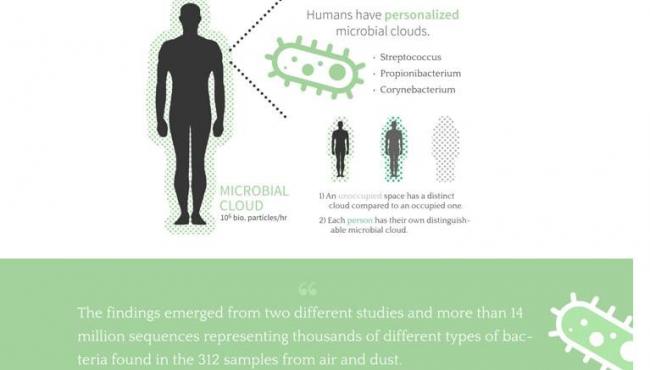-
Tips for becoming a good boxer - November 6, 2020
-
7 expert tips for making your hens night a memorable one - November 6, 2020
-
5 reasons to host your Christmas party on a cruise boat - November 6, 2020
-
What to do when you’re charged with a crime - November 6, 2020
-
Should you get one or multiple dogs? Here’s all you need to know - November 3, 2020
-
A Guide: How to Build Your Very Own Magic Mirror - February 14, 2019
-
Our Top Inspirational Baseball Stars - November 24, 2018
-
Five Tech Tools That Will Help You Turn Your Blog into a Business - November 24, 2018
-
How to Indulge on Vacation without Expanding Your Waist - November 9, 2018
-
5 Strategies for Businesses to Appeal to Today’s Increasingly Mobile-Crazed Customers - November 9, 2018
Humans Have Personalized Microbial Clouds
“What we were trying to do was to take the knowledge that we have about the human microbiome and microbiology and that we’ve begun to discover in the built environment, and understand how those two interact”, Adam Altrichter, a research assistant at the University of Oregon’s Biology and Built Environment Center, told me over the phone.
Advertisement
What the researchers at Oregon University want to explore is if it leaves a detectable trace in the air around us, and if our unique microbiome clouds can act like data sets that harbour information on where we’ve been before.
Though it may not be as thick as Pigpen’s iconic dust ball, everybody travels with their own personal microbial cloud.
The personal “microbial cloud, “described today in the journal Peer J, is just the latest expression of the human microbiome, those tens of trillions of microbial consorts that live on us and inside of us, outnumbering our own bodily cells ten to one”.
After 2 hours, the researchers found they were able to determine whether a person was present in the chamber based on looking only at the bacteria from the air samples.
In analyzing the hovering microbe clouds of 11 test subjects, researchers showed that differences in the combination of airborne microbes could be used to a identify a person who had recently occupied a room.
4 million sequences were run showing thousands of different microbes.
The striking results were driven by several groups of bacteria that are ubiquitous on and in humans, such as Streptococcus, which is commonly found in the mouth, and Propionibacterium and Corynebacterium, both common skin residents. People emitting the most particles may be the most easily identifiable, the researchers write.
Although many teens don’t often copy their parents’ behavior, there’s one habit they may pick up from mom or dad – smoking.
Now Russian scientists claim to be making progress in adapting a 3.5 million year old “eternal” bacteria named Bacillus F to improve the longevity of humans. Usually it’s a unique of bacteria and air that makes up each and everyone of our microbial cloud datasets. They utilized the analysis of suspended particular matter and short-read 16S sequencing, focusing on categorizing whole microbial communities rather than identifying pathogens.
Advertisement
Researcher James Meadow said: ‘You are standing in another person’s microbial cloud the moment you shake hands’. According to Meadow they were surprised to find they can identify the personalized microbial clouds.




























